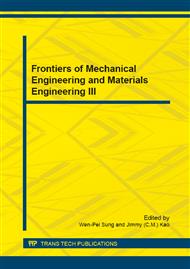p.377
p.381
p.387
p.392
p.396
p.403
p.406
p.411
p.417
Research on the Near-Net Forging Processes for the Body of Overrunning Clutch
Abstract:
The near-net forging processes for the body of overrunning clutch was studied by adopting the warm upsetting,warm no-flash die forging,cold extrusion and cold coining process。The arrangement of the near-net forging processes,the procedure of the near-net forging process,the choice of forging press,the structures of the punch and the lower die,and the key problem of die design were introduced in detail。The chief advantages of this process include the high surface quality,closer tolerances and qualified inner avity for the body of overrunning clutch without subsequent machining;so it is significantly energy-saving,material-saving,and the economic benefit is remarkable。
Info:
Periodical:
Pages:
396-402
Citation:
Online since:
January 2015
Authors:
Price:
Сopyright:
© 2015 Trans Tech Publications Ltd. All Rights Reserved
Share:
Citation:


